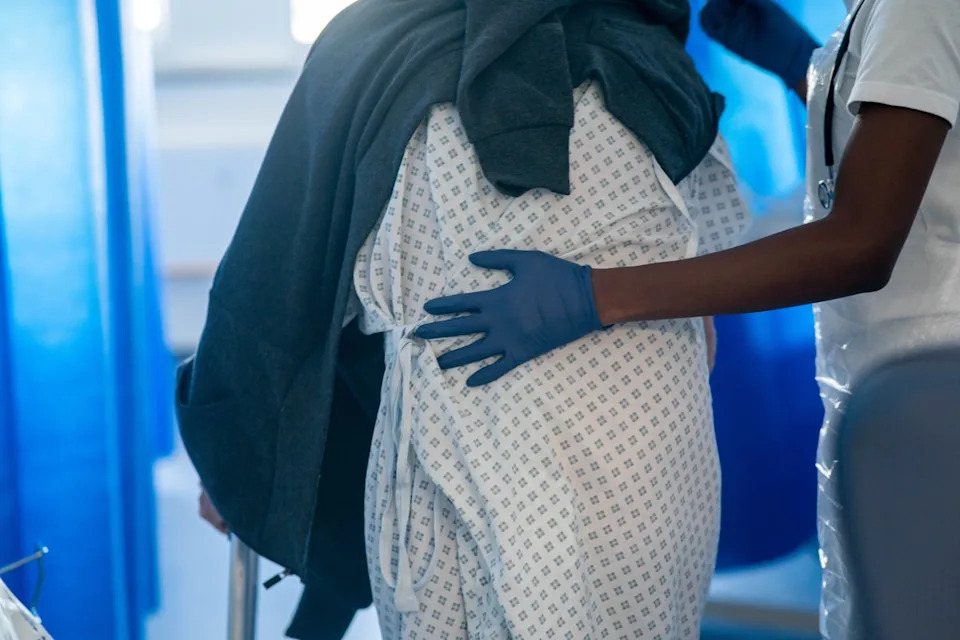A rising variety of stroke victims are placing themselves in danger by taking themselves to A&E as a substitute of ready for an ambulance, a charity has warned.
It comes amid issues about lengthy waits for an ambulance.
However stroke sufferers who search assist through 999 have a greater likelihood of getting specialist assist, the Stroke Affiliation stated.
The charity acknowledged individuals’s issues about ambulance wait occasions, however that is nonetheless the “quickest and best approach to get the very best therapy and look after stroke”.
A stroke happens when the blood provide to a part of the mind is reduce off and it’s classed as a medical emergency.
Sure remedies can scale back the danger of demise and long-term incapacity if they’re delivered in a well timed approach.
However new evaluation from the Stroke Affiliation exhibits {that a} stroke affected person makes their very own approach to A&E, as a substitute of arriving by ambulance, each 22 minutes throughout England, Wales and Northern Eire.
General 26.8 per cent of stroke sufferers – some 23,491 individuals – reported making their very own preparations to get to the hospital in 2024/25, in keeping with the Sentinel Stroke Nationwide Audit Programme.
The charity acknowledged individuals’s issues about ambulance wait occasions however say it’s nonetheless the best approach of getting care (Peter Byrne/PA)
It’s the highest quantity because the stroke audit started greater than a decade in the past.
The determine has been steadily rising over the previous few years, standing at simply 19.4 per cent in 2020/21.
The Stroke Affiliation is encouraging individuals to name 999 relatively than making their very own approach to A&E, saying that is the quickest approach to get specialist stroke remedies.
Paramedics know which models are the very best for emergency stroke care – which aren’t accessible in any respect hospitals, it added.
Guaranteeing sufferers get to those specialist hubs means they’re extra prone to get well timed entry to stroke remedies together with a process to take away the blood clot inflicting the stroke, referred to as a thrombectomy, or fast-track mind scans – which might be requested earlier than an ambulance even arrives on the hospital.
They will also be admitted straight to an acute stroke unit which has been proven to enhance a affected person’s survival odds and results in higher restoration amongst stroke victims.
The charity highlighted how well timed therapy is important to extend the possibilities of a affected person surviving a stroke and to minimise mind harm which may go away stroke survivors unable to maneuver, see, converse or swallow.
Professor Deb Lowe, medical director of the Stroke Affiliation, stated: “Stroke is a medical emergency so anybody who’s experiencing signs ought to name 999 and look forward to an ambulance.
“We have now lengthy supported the NHS’s Quick marketing campaign which highlights the most typical signs of stroke – facial drooping, arm weak spot, slurred speech – as that’s when it’s time to name 999.
Stroke sufferers are being urged to name 999 and look forward to an ambulance (Jeff Moore/PA Wire)
“Even with the plain pressures the NHS is experiencing, we stand agency on that recommendation as it’s one of the simplest ways to get speedy and evidence-based care.”
She added: “The UK’s inhabitants is ageing quickly and we’re anticipating the variety of individuals having strokes yearly to rise by 50 per cent to 151,000 by 2035.
“It’s vital every individual affected by stroke will get the therapy they want as rapidly as doable.
“We do perceive individuals’s issues about lengthy ambulance waits however, usually, it’s nonetheless the quickest and best approach to get the very best therapy and look after stroke.
“That is particularly pertinent when supported by applied sciences, reminiscent of prehospital video triage, which may help diagnose stroke on the street to a specialist stroke unit.
“Attending to the correct place for speedy and efficient therapy could make the distinction between a stroke affected person strolling out of hospital or leaving in a wheelchair.”
The charity identified that in July, the common ambulance response time for class 2 calls, which incorporates stroke, was 28 minutes and 40 seconds – throughout the present 30-minute goal.
And it stated that ambulance handover occasions – how lengthy a affected person waits in an ambulance earlier than being taken into hospital – have been reducing in current months, although the common continues to be above the 15 minute goal.


